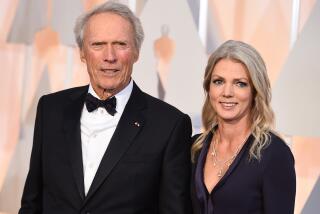A pearl of beauty
It’s not till the very end of “Girl With a Pearl Earring” that we get to see the actual 17th century Johannes Vermeer painting that inspired both Tracy Chevalier’s bestselling novel and this film adaptation -- and that is as it should be.
For it is a measure of how convincingly book and film have conveyed the author’s compelling notions of this masterpiece’s back story, the imaginative re-creation of how this particular painting came to be, that when we finally see it we can’t help but feel that we understand the art with a depth and richness of knowledge we have not had before.
We feel we’re seeing, so to speak, beyond the canvas to the human story that the author imagined when she wrote the novel to answer the question, “What did Vermeer do to her to make her look like that, happy and sad at the same time?”
Though the screen version of “Girl With a Pearl Earring” is not in the same class as the painting, the success it has in being both convincing and involving is paradoxical two times over. While Chevalier’s quietly and persuasively written book was a feat of language in the service of literary imagination, the film’s virtues are almost completely visual. And those visuals are so impressive and overpowering that they largely make up for the fact that the book’s delicate story has been somewhat standardized into a tale that lacks the subtlety and grace that made the novel so involving.
As envisioned by director Peter Webber, production-designed by the veteran Ben van Os (“Orlando” and the work of Peter Greenaway) and gorgeously photographed by Eduardo Serra (Oscar nominated for “The Wings of the Dove”), “Girl” is so beautifully rendered it truly seems painted with light.
Set in Delft, Holland, in the late 1660s, “Girl” is a gratifyingly tactile movie, concerned with surfaces, objects and the wonder of seeing. As befits the story of a man whose eyes, a character in the novel says, “are worth a room full of gold,” it offers an impeccable re-creation of the ambience of that time, taking us from bustling outdoor markets to cramped, candlelit interiors to the crystalline light of the painter’s studio. It’s almost as if the filmmakers wanted to shoot in Vermeer-influenced light, wanted to suggest he painted the way he did because that’s the way the world looked to him. And now, thanks to these visual wonders, to us.
Aside from its look, “Girl’s” other great asset is actress Scarlett Johansson as Griet, Vermeer’s 17-year-old model and inspiration. With this period role following right behind “Lost in Translation’s” ultramodern girl, Johansson underlines her great ability to fit in everywhere, no matter what the setting or era.
Johansson has to do much more than remarkably resemble the girl in the painting (which she does). Though Chevalier’s book takes place mostly inside Griet’s head, the film has wisely avoided voice-over, so it falls to Johansson and her gift for showing feelings without words, for looking bland, inquisitive or furious as the situation demands, to convey the panoply of emotions she is experiencing.
Griet is introduced at a low point in her young life. Her father, a tile painter, has been blinded in an accident, and the family finances demand that she take a job, specifically as a maid in the house of the celebrated painter Vermeer (Colin Firth).
With Vermeer’s wife exhausted and ill-humored from a constant stream of children, the other servants suspicious and the children an irritant, no one in the house is happy to see Griet. A flirtation with Pieter (Cillian Murphy), the local butcher’s son, might have provided some diversion if Griet were that kind of girl, but she is not.
The power in the establishment is in the hands of the artist’s shrewd mother-in-law, Maria Thins (Judy Parfitt). Though the film doesn’t make this clear, Griet was specifically hired to clean Vermeer’s studio so that no object be disturbed. She’s immediately transfixed by the sacred nature of that space, by the painter’s work and, very soon, by the painter himself.
What “Girl” does well, perhaps because of Webber’s background as a maker of documentaries, is illustrate Griet’s increasing involvement with the physical details of painting. She’s fascinated -- and so are we -- as Vermeer explains his technique, shows her how colors are made, even introduces her to the wonders of the camera obscura. Griet enjoys being Vermeer’s chaste apprentice/accomplice, until the possibility of her being a model brings the pressures of her place in the painter’s household to a boil and points up difficulties in the story as filmed.
Firth is a fine actor with strong romantic roles in films from “Bridget Jones’s Diary” to “Love Actually” -- which may be part of the difficulty. While the book is smartly circumspect about the artist’s manner and appearance, the film can’t seem to help turning Vermeer into one of those brooding, heedless, dashingly romantic figures that have become standard in film for generations. While this ups the romance quotient and increases the smoldering looks, it also makes for a more obvious interpersonal dynamic.
This obviousness is increased by the problematic nature of Olivia Hetreed’s adaptation. It pushes the plot toward increasingly conventional romantic situations, and its dialogue is a lot less facile than the novel’s. Having Vermeer’s lecherous patron Van Ruijven (Tom Wilkinson) say, “I won’t turn out for small beer and biscuits” is not only clumsy, it makes the film sound unconvincingly British in a way that’s totally at variance with the novel’s sensibility.
These may be small problems, but in a film this exquisitely put together and based on a book that exactly calibrates its effects, these departures from verisimilitude are noticeable and troublesome. But even if “Girl With a Pearl Earring” is not nearly as remarkable dramatically as it is visually, it is, finally, a film of great beauty, and that is something worth appreciating.
*
“Girl With A Pearl Earring”
MPAA rating: PG-13, for some sexual content
Times guidelines: Moments of sensuality, adult themes
Colin Firth...Vermeer
Scarlett Johansson...Griet
Tom Wilkinson...Van Ruijven
Judy Parfitt...Maria Thins
Cillian Murphy...Pieter
Pathe Pictures presents in association with UK Film Council, released by Lions Gate Films. Director Peter Webber. Producers Andy Paterson, Anand Tucker. Executive producers Francois Ivernel, Cameron McCracken, Duncan Reid, Tom Ortenberg, Peter Block, Daria Jovicic, Philip Erdoes, Nick Drake. Screenplay Olivia Hetreed, based on the novel by Tracy Chevalier. Cinematographer Eduardo Serra. Editor Kate Evans. Costumes Dien van Straalen. Music Alexandre Desplat. Production design Ben van Os. Art director Christina Schaffer. Set decorator Cecile Heideman. Running time: 1 hour, 39 minutes.
In limited release.
More to Read
Only good movies
Get the Indie Focus newsletter, Mark Olsen's weekly guide to the world of cinema.
You may occasionally receive promotional content from the Los Angeles Times.







